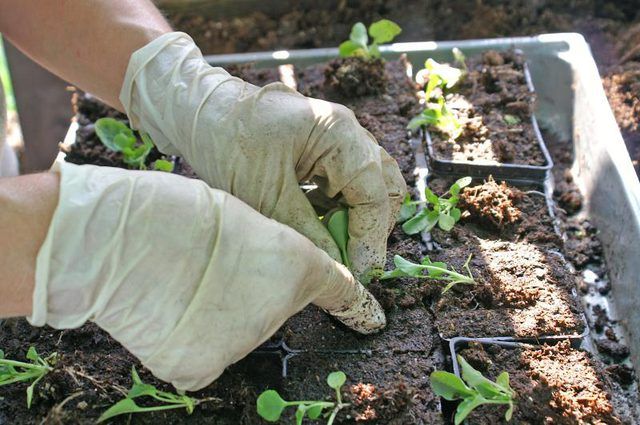Bulbs
Flower Basics
Flower Beds & Specialty Gardens
Flower Garden
Garden Furniture
Garden Gnomes
Garden Seeds
Garden Sheds
Garden Statues
Garden Tools & Supplies
Gardening Basics
Green & Organic
Groundcovers & Vines
Growing Annuals
Growing Basil
Growing Beans
Growing Berries
Growing Blueberries
Growing Cactus
Growing Corn
Growing Cotton
Growing Edibles
Growing Flowers
Growing Garlic
Growing Grapes
Growing Grass
Growing Herbs
Growing Jasmine
Growing Mint
Growing Mushrooms
Orchids
Growing Peanuts
Growing Perennials
Growing Plants
Growing Rosemary
Growing Roses
Growing Strawberries
Growing Sunflowers
Growing Thyme
Growing Tomatoes
Growing Tulips
Growing Vegetables
Herb Basics
Herb Garden
Indoor Growing
Landscaping Basics
Landscaping Patios
Landscaping Plants
Landscaping Shrubs
Landscaping Trees
Landscaping Walks & Pathways
Lawn Basics
Lawn Maintenance
Lawn Mowers
Lawn Ornaments
Lawn Planting
Lawn Tools
Outdoor Growing
Overall Landscape Planning
Pests, Weeds & Problems
Plant Basics
Rock Garden
Rose Garden
Shrubs
Soil
Specialty Gardens
Trees
Vegetable Garden
Yard Maintenance
When to Plant Vegetables in Pennsylvania
When to Plant Vegetables in Pennsylvania. Because Pennsylvania includes three U.S. Department of Agriculture plant hardiness zones and their subzones, the times for planting vegetables vary considerably from Philadelphia, which is in USDA zone 7a in the southeastern part of the state, to Bradford in USDA zone 5a in the northwest. The state's...

Because Pennsylvania includes three U.S. Department of Agriculture plant hardiness zones and their subzones, the times for planting vegetables vary considerably from Philadelphia, which is in USDA zone 7a in the southeastern part of the state, to Bradford in USDA zone 5a in the northwest. The state's coldest areas, in USDA zone 5a, are mostly concentrated in Warren and McKean counties. Because the requirements for gardening in USDA zone 5a differ from those in USDA zone 5b regions, the two subzones are listed separately. Always adapt seedlings started indoors gradually to the cooler and brighter conditions outdoors before you transplant them into a garden.
Hardy Vegetables
Hardy vegetables include those that can survive frosts, such as cabbage (Brassica oleracea, Capitata Group), broccoli (Brassica oleracea, Cymosa Group) and brussels sprouts (Brassica oleracea, Gemmifera Group). Start such plants indoors about 10 weeks before your location's last average annual spring frost date, and transplant them into the garden four weeks before that last frost date, when the soil temperature is at least 40 degrees Fahrenheit. The last frost is usually in mid- to late April for USDA zone 7, in early to mid-May for zone 6, in mid- to late May for zone 5b and in June for zone 5a.
Hardy root crops such as carrot (Daucus carota subsp. sativus), beet (Beta vulgaris subsp. vulgaris) and radish (Raphanus sativus) usually should be direct sown -- sown directly in the garden -- rather than started indoors. That rule also applies to peas (Pisum sativum) as well as vegetables grown from tubers or sets, such as potato (Solanum tuberosum) and onion (Allium cepa) plants.
Because the suggested planting times are based on more conservative, later last frost dates, you may be able to sow seeds and set out seedlings two weeks earlier in a mild year. If you are running late, you can continue to plant hardy vegetables until late May.
USDA zone 7: Pre-sow in mid-February; set outdoors or direct sow in late March.
USDA zone 6: Pre-sow in early March; set outdoors or direct sow in mid-April.
USDA zone 5b: Pre-sow in mid-March; set outdoors or direct sow in late-April.
USDA zone 5a: Pre-sow in early April; set outdoors or direct sow in mid-May.
Slow-Growing Tender Vegetables
Among the vegetables that grow slowly are tender vegetables, such as tomato (Lycopersicon esculentum), pepper (Capsicum annuum) and eggplant (Solanum melongena), which almost always are started early or purchased as transplants. Plan to sow them indoors two months before your area's last spring frost date and to transplant them into the garden just after that date. The soil temperature should be at least 60 F when pepper and eggplant seedlings are set out, but tomato seedlings tolerate 50 F soil.
USDA zone 7: Pre-sow in late February; set outdoors in late April.
USDA zone 6: Pre-sow in mid-March; set outdoors in mid-May.
USDA zone 5b: Pre-sow in late March; set outdoors in late May.
USDA zone 5a: Pre-sow in mid-April; set outdoors in mid-June.
Fast-Growing Tender Vegetables
Pre-sowing large-seeded vegetables is usually pointless because they grow rapidly when sown directly in a garden. Those vegetables include vining types such as varieties of melons (Cucumis melo) and squashes (Cucurbita spp.) and cucumber (Cucumis sativus), as well as beans (Phaseolus spp.) and sweet corn (Zea mays).
If you live in USDA zones 5b through 7, plant all of them except corn just after your last frost date, provided the soil temperature is at least 60 F. Corn can be started a little earlier, when the soil is 50 F. If you are in USDA zone 5a, then some of these vegetables may need to be sown indoors two to three weeks before the last spring frost; an option is to purchase them as transplants to extend a short growing season.
USDA zone 7: Direct-sow in late April.
USDA zone 6: Direct-sow in mid-May.
USDA zone 5b: Direct-sow in late May.
USDA zone 5a: Direct-sow in mid-June or pre-sow indoors in late May to set out in mid-June.
Fall Vegetables
Fast-maturing varieties of the same hardy vegetables that can be planted in spring also can be grown in fall. Sow them about two months before your area's first average annual fall frost, placing a board over rows of seeds that you sow in your garden to cool the soil. Remove that board as soon as the seeds begin to germinate, and mulch the seedlings with straw so they can continue to keep cool.
USDA zone 7: Sow in mid- to late August.
USDA zones 5b and 6: Sow in early to mid-August.
USDA zone 5a: Sow in early to late July.